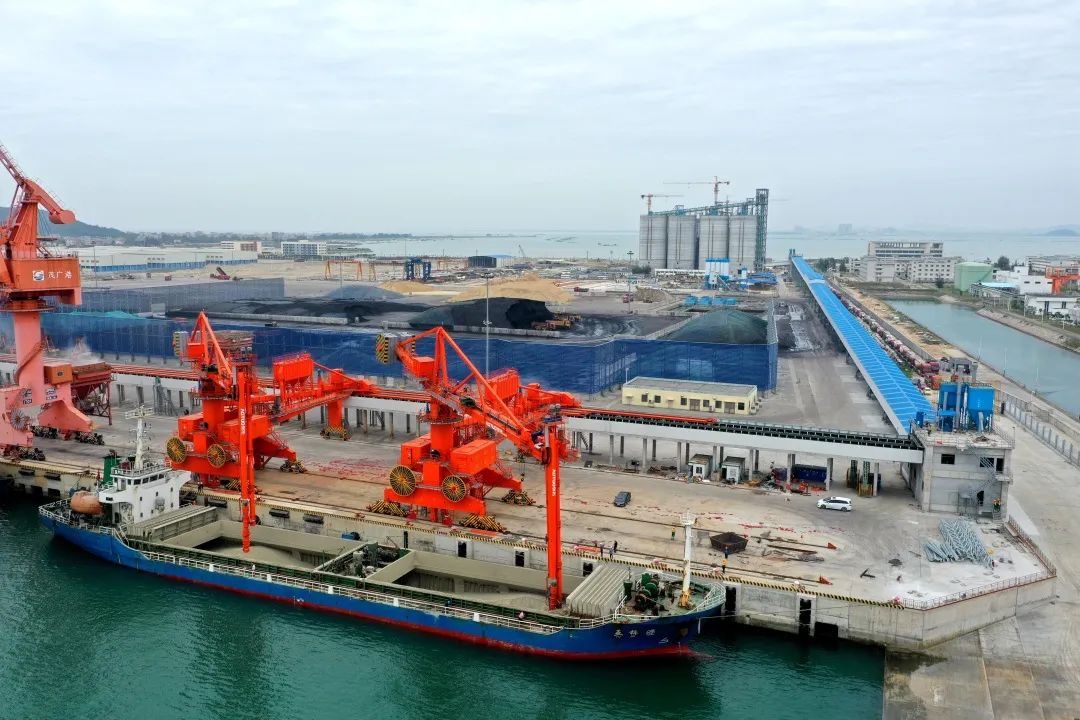Cement terminal is a facility used to store, transfer and distribute cement. It is a place for temporary storage and distribution of cement, used to transport cement from the manufacturer or storage silo to the place where cement is needed. It is usually located in the center of the water supply area so that cement can be distributed quickly and reliably.
How to Transport Cement
There are two main ways to transport cement: ground transportation and water transportation.
Ground transportation is the most common method, typically using trucks, trailers, or transport vehicles to deliver cement. The cement terminal will be equipped with various conveying equipment and tools, including loading and unloading equipment for loading and unloading cement, and transport vehicles for transporting cement from cement terminal to the destination.
Water transportation is another common method, especially when the water supply area is far from the cement manufacturer. Commonly used means of transportation include barges, cargo ships, container ships, etc. The cement terminal will be equipped with corresponding docks and unloading equipment to facilitate the loading, unloading and transshipment of cement.
Characteristics of Cement Terminal
Storage and transfer functions: The main function of the cement terminal is to store and transfer cement. Cement is usually produced in factories and then transported to cement terminal by means of transportation, such as trucks or trains. In cement terminal, cement can be stored and temporarily stored before being distributed to various destinations as needed.
Large-scale capacity: Cement terminals usually have large capacities and can use steel silos or steel grid structures to store large amounts of cement. This helps meet demand in different regions or construction sites and ensures sufficient supply.
Reliability and safety requirements: Cement terminals need to have reliable facilities and systems to ensure the safe storage and transfer of cement. This includes secure storage facilities, appropriate fire prevention measures, equipment maintenance, etc.
Ease of transportation and distribution: Cement terminals are usually located in convenient locations to facilitate transportation and distribution of cement. They are usually located near roads, railways or waterways to facilitate the transportation of cement.
Supporting facilities: The cement terminal needs to provide some supporting facilities, such as loading and unloading equipment, weighing equipment, storage silos, etc., to support the cement transfer operation.
Benefits of Using Cement Terminal to Transport Cement
Improve transportation efficiency: The cement terminal is located in the center of the water supply area, allowing cement to be transported to where it is needed more quickly. It can serve as a cement distribution center to facilitate the integration and distribution of cement resources, reduce transportation distance and time, and improve transportation efficiency.
Reduce transportation costs: Cement terminal can centrally store large amounts of cement, reducing the number of round trips for a single transportation vehicle, thereby reducing transportation costs. In addition, cement terminal can achieve economies of scale in transportation and further reduce transportation costs by optimizing transportation planning and logistics management.
Ensure supply stability: The cement terminal can establish a stocked reserve inventory in the water supply area to deal with emergencies or situations that require large amounts of cement supply. By holding inventory in reserve, cement terminal can ensure the stability of supply and avoid worksite shutdowns or delays due to delays or disruptions in the supply chain.
Optimize resource utilization: Cement terminal can adjust cement inventory according to actual demand to prevent oversupply or undersupply. This can avoid the waste of resources due to inventory backlog, or the inability to obtain the required cement in time due to insufficient inventory at the construction site. By properly optimizing inventory, resources can be better utilized.
Large Capacity Storage: Cement silos typically have large capacities and can store hundreds to thousands of tons of cement. This can meet the needs of large-scale projects or continuous supply and ensure continuous and stable supply.
Partitioned Storage: Cement silos are usually divided into multiple storage areas or chambers to facilitate the storage of different varieties or specifications of cement. This allows for better management and allocation of cement resources.
Efficient Lifting: Cement silos are usually equipped with lifting equipment, such as elevators, conveyor belts, etc., to achieve automated or semi-automated cement lifting operations. This can improve storage and picking efficiency and reduce labor costs and time costs.
Temperature Control: Cement silos can often be temperature controlled to keep the cement within the appropriate temperature range. This helps maintain the quality and stability of the cement and avoids quality issues caused by prolonged storage at high or low temperatures.
Safety Protection: Cement silos are usually equipped with safety measures, such as fire protection, explosion-proof, dust-proof and other equipment, to ensure the safety of the storage and handling process. This is to prevent cement accidents or quality problems and protect the safety of workers and the environment.

.jpg)
.jpg)

.jpg)